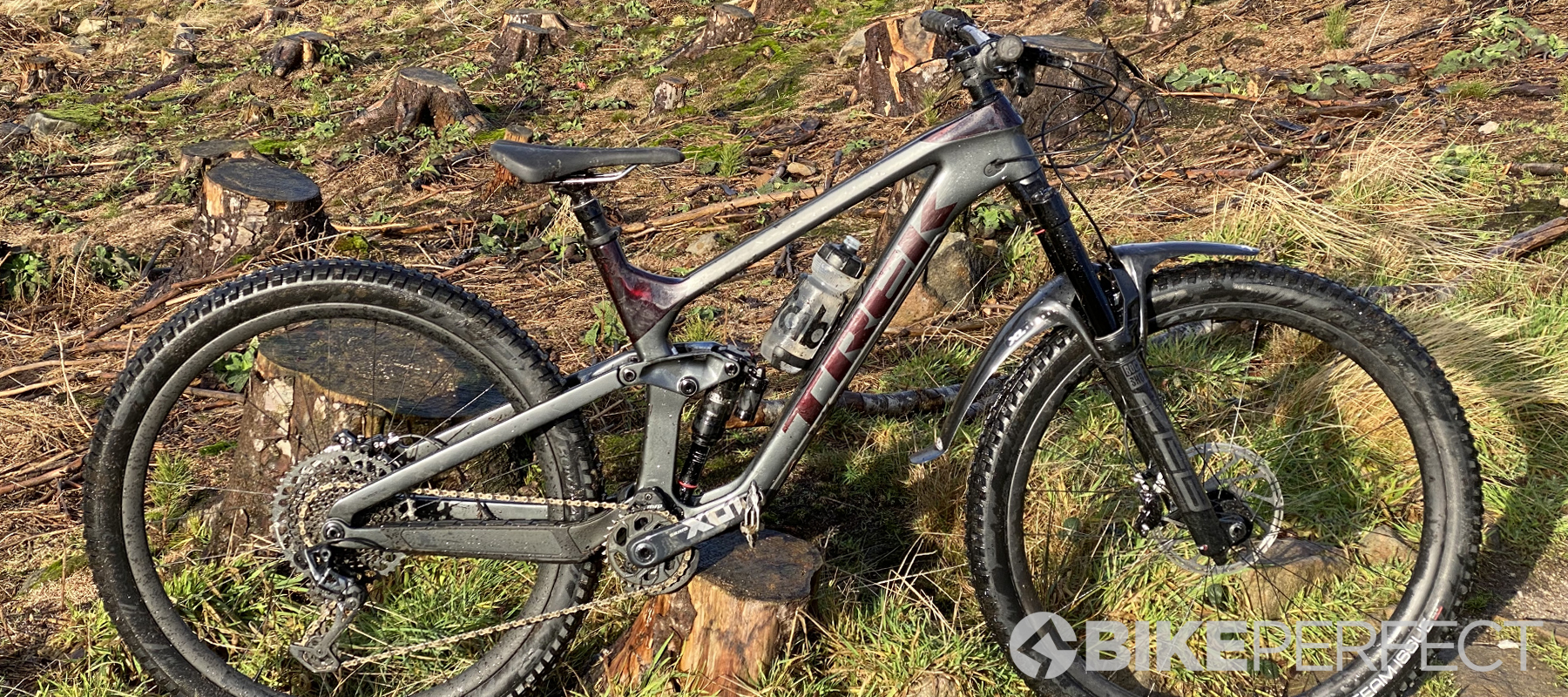Bike Perfect Verdict
Ragingly fast and precise enduro race bike with all-day efficiency and a ton of practical details for those who can afford and appreciate it
Pros
- +
Phenomenal rear suspension
- +
Easy setup
- +
Awesome aggro geometry
- +
Precision accuracy
- +
High control cockpit
- +
Internal storage
- +
Efficient pedaling
- +
Threaded BB
- +
Optional steering lock
Cons
- -
More confident with switched tires
- -
ZEB fork requires some patience
- -
Deserves better wheels
- -
Short dropper on small sizes
- -
Seriously grounded rather than playful
Why trust BikePerfect
The Trek Slash 9.9 X01 is the brand's flat-out fast long-travel 29er set to do battle against the best enduro mountain bikes. The 2021 model gets a new frame, new geometry, new features and RockShox's take on Trek's proprietary Thru Shaft shock technology. The result is a seriously accurate, phenomenally controlled, track or trail dominating high-velocity weapon that’s still pedal efficient and loaded with practical details for big days out. You’ll need to be regularly hitting big stuff at full gas to get the most from it though, and we’d switch the tires round, too.
Design and geometry
The Trek Slash 9.9 X01's layout is the same as it's always been. Massive shallow S-shaped downtube, stout and oversized ‘brow’ 8 headtube, steep top tube and a thick square section seat tube with forwarding kink to mount the short rocker link that drives the shock down towards the BB. The linkage attaches to the long braced seat stays via Trek’s much-copied ‘Mino’ link that can be flipped to change angles by 0.5 degrees and BB height by 7mm. The stays meet at an ABP (Active Braking Pivot) concentric with the rear axle and then the deep chainstays kick back up to the main pivot just higher than the top and fractionally behind the center of the 30T chainring.
For this year though, that chainset mounts via a threaded rather than press-fit bottom bracket. The massive downtube now has a hatch under the full-size bottle cage to access internal storage (pouch included). The seat tube is 34.9mm in diameter for the stiffest possible dropper shaft and there’s an extra replaceable guard under the downtube to protect the OCLV Carbon if you’re shuttling over the tailgate of a pickup. The internal control routing is muffled with internal clips and bolted entry inserts. The neck of the downtube is no longer dead straight either, so there’s enough clearance for a fork to spin right around. That means the ‘Knock Block’ limiter key in the top tube works with headset spacers that have 72-degrees of rotation on either side of straight (rather than the previous 58-degrees) or you can just remove the key entirely for a free spin.
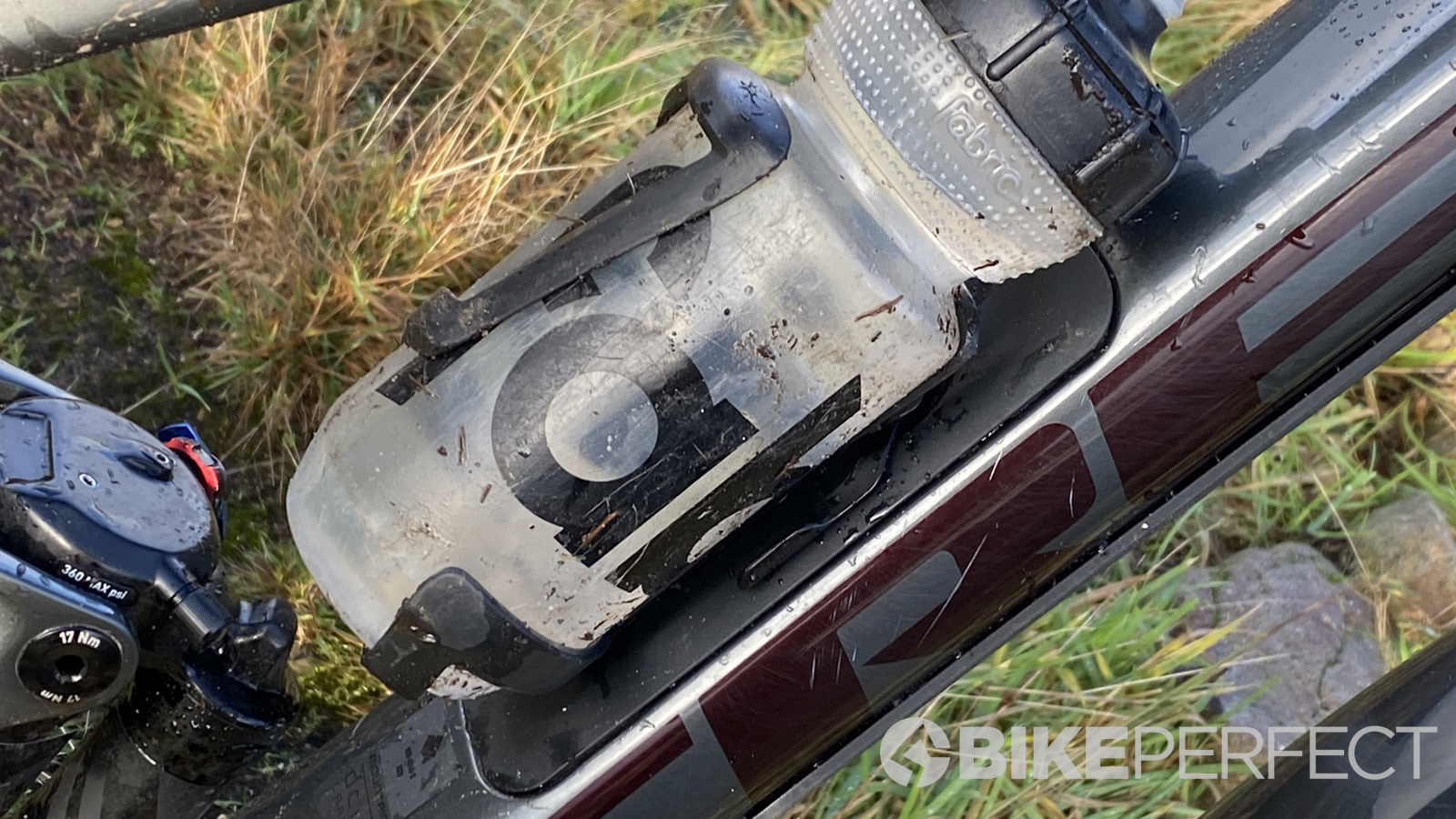
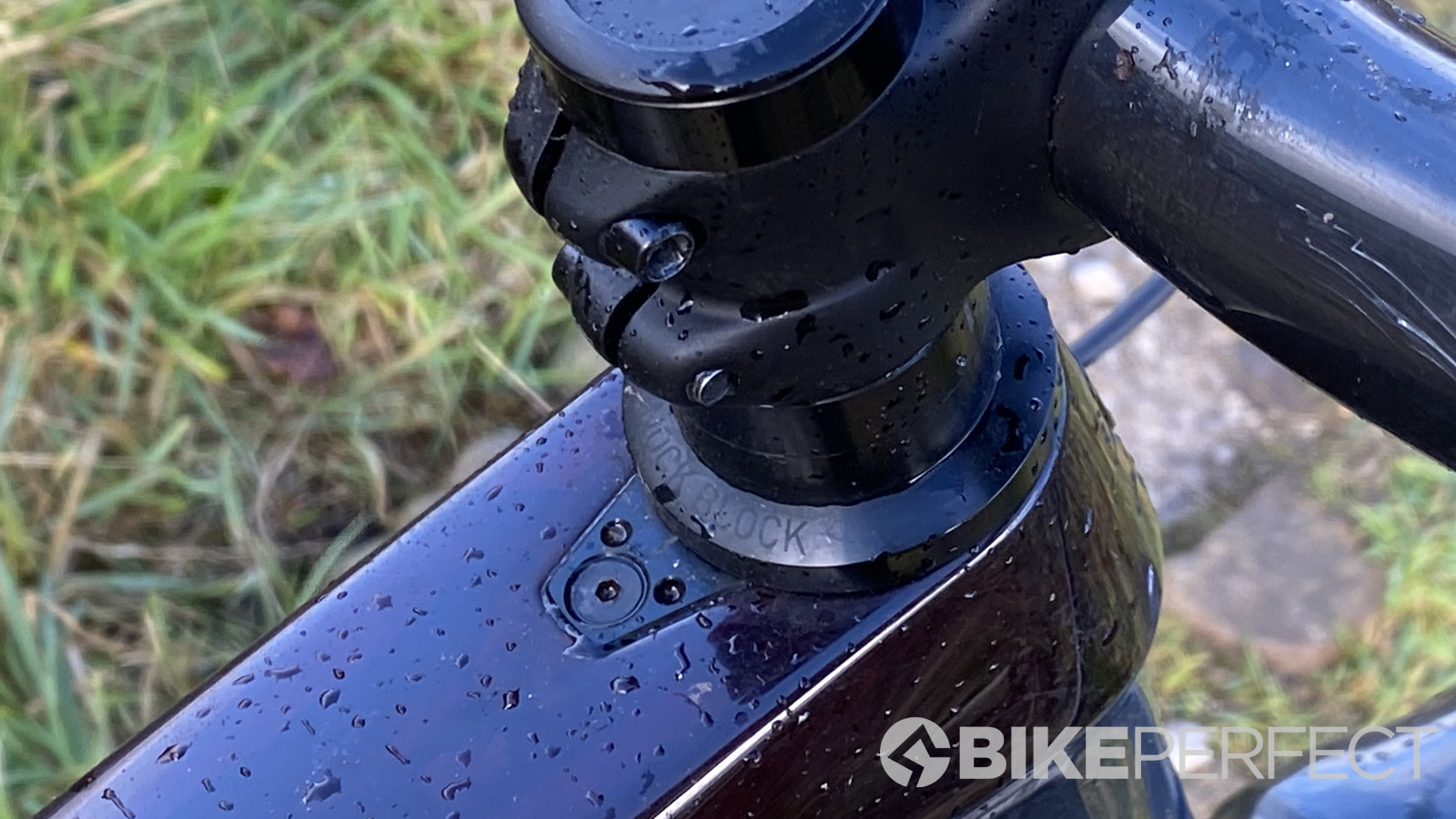
The other angles of the bike have been altered too, bringing it back in line with the current crop of enduro bikes. Depending on where you have the Mino Link chipset the head angle is now 64.1-degrees or 64.6-degrees and the effective seat angle is 75.6-degrees or 76.1-degrees. Reach has been extended significantly on all sizes with the large size now stretching to 486 or 491mm with a 450mm seat tube. Travel also goes up by 10mm to 160mm at the rear with a 170mm fork. These features and geometry changes also appear on the alloy framed bikes, including the storage which, according to Trek’s designers, was one of the hardest parts of the whole frame development process. Working around the packaging demands of the unique shock was another headache, but the end result is you can fit any damper you want into the Slash frame and the kinematic works with coil too.
Components and build
The 9.9 is the top Slash available in the UK and comes with the choice of two of the best MTB groupsets, a Shimano XTR spec or the SRAM X01 version we tested. As you’d hope that gets you an almost complete set of X01 gearing (the chain is GX) complete with carbon armed chainset, 30T ring and an MRP chain guard/guide as standard. Brakes are powerful and widely adjustable SRAM Code RSC with a 200mm rotor up front, but a mid-sized 180mm rear. The tires reverse that control balance with a 29 x 2.4in lower tread SE4 tire on the front and a blockier 29 x 2.6in SE5 on the rear, both featuring reinforced Core Strength carcasses. You get Bontrager’s affordable Line Elite 30 carbon rim wheels as standard which aren’t as light as the best mountain bike wheels (just under 1,900g a pair) but the OCLV lay up is seriously tough. They come set up tubeless as standard too so you don’t have to fight with the tight fit. Bontrager supply the keyed stem for the Knock Block steering lock, the extra-wide 820mm carbon bar and the short-as-possible 35mm stem. The oversized 34.9mm shaft dropper post ranges from 100 to 200mm stroke depending on frame size. All 9.9 bikes get 170mm of travel from the huge 38mm stanchion RockShox ZEB fork, with 160mm of rear suspension controlled by a custom Super Deluxe Push shock. There are two lower-priced carbon models - 9.8 and 9.7 - which get a Thru Shaft shock, as well as two alloy models with conventional shocks starting with the Slash 7 at $3,499.99/£2,950.

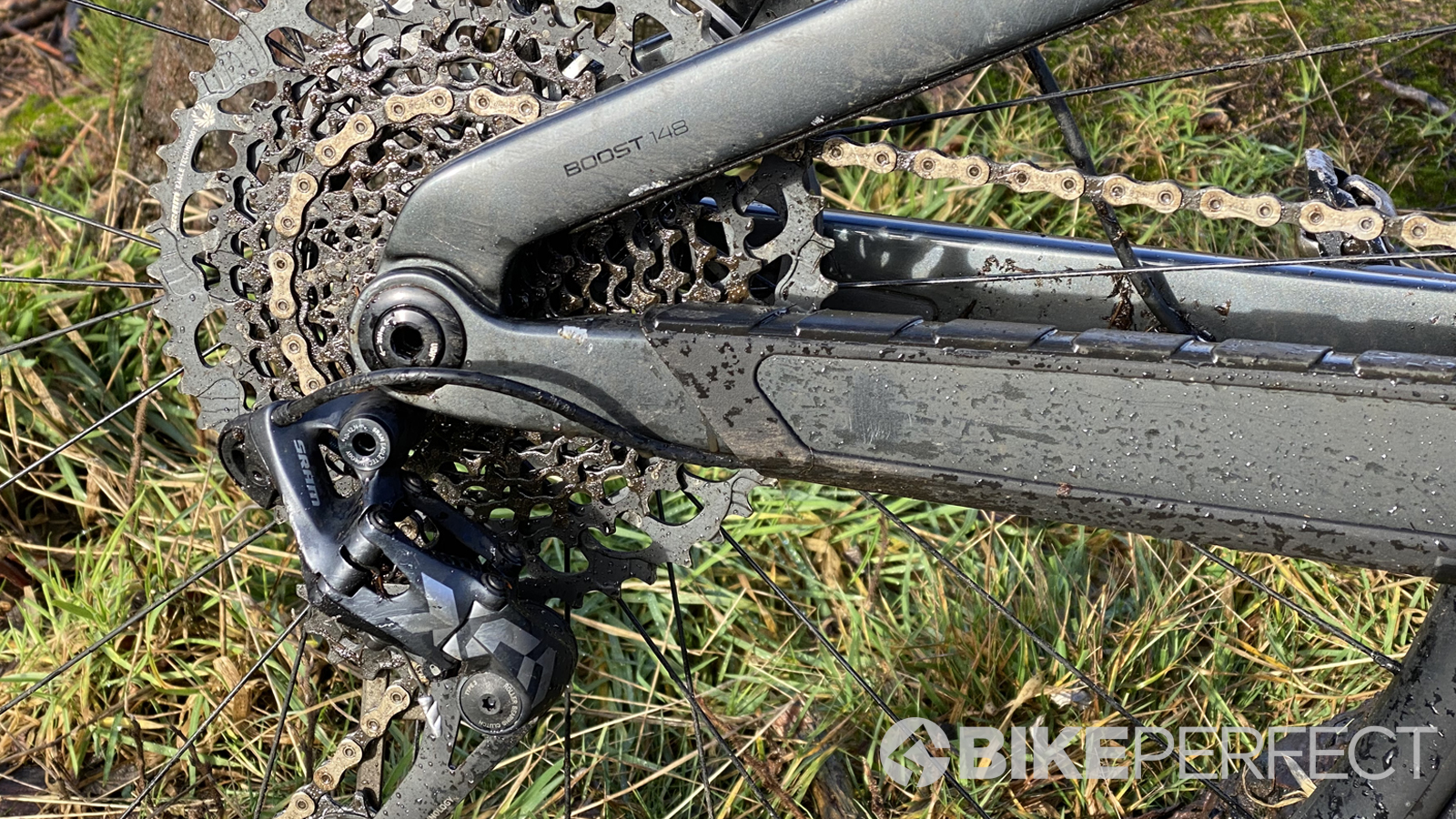
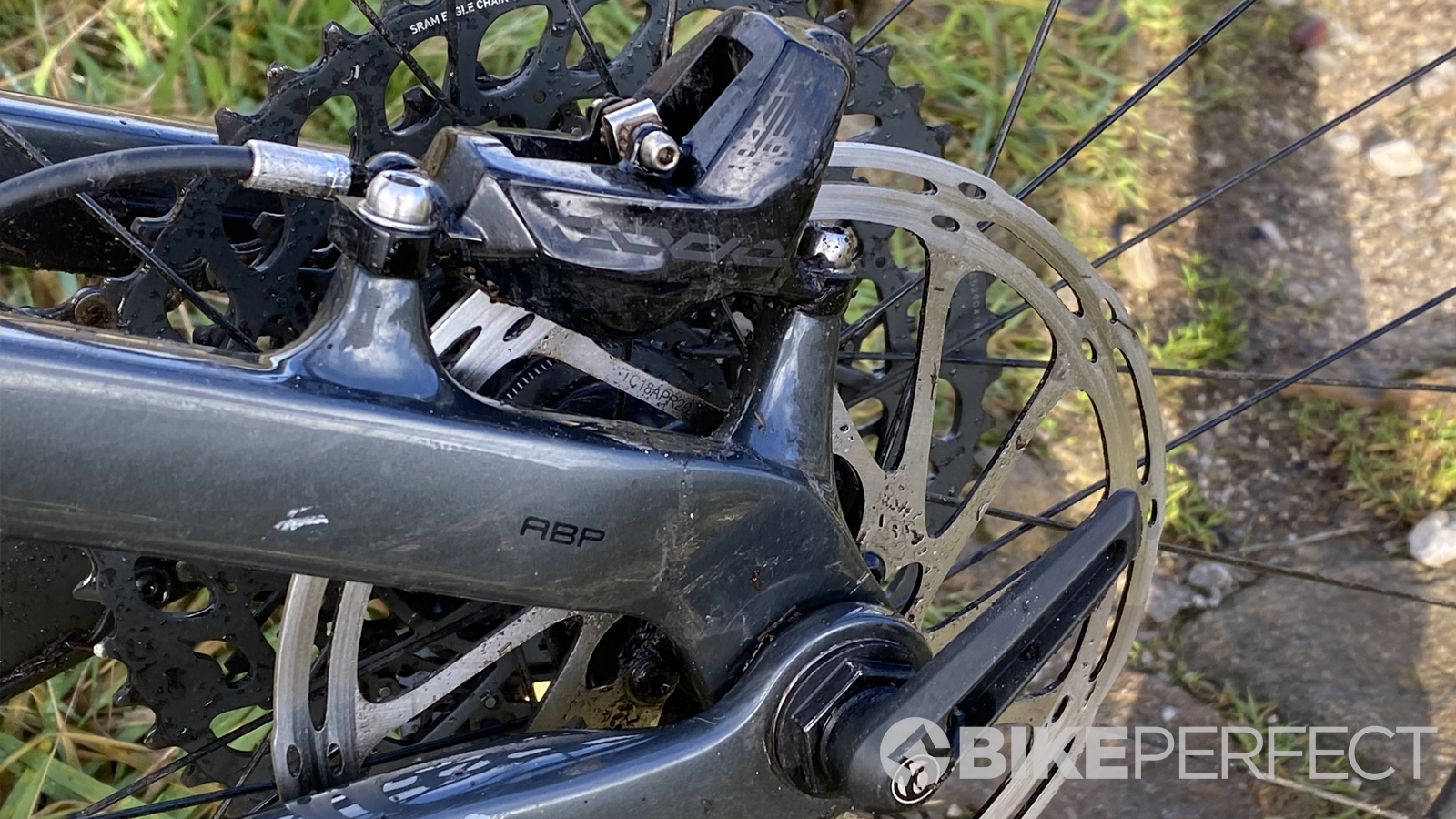
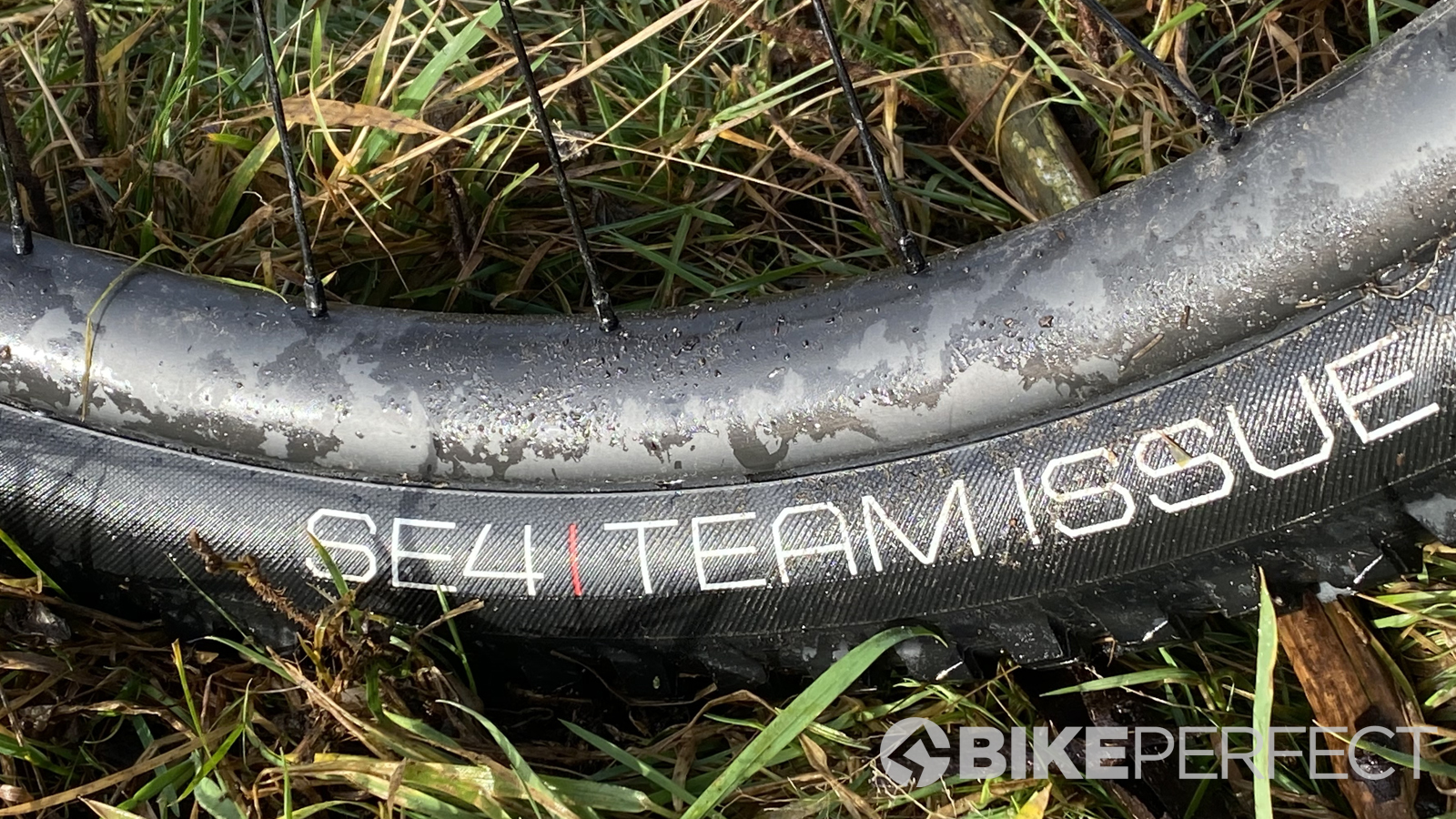
Ride, handling, and performance
The Slash has always been one of the stiffest-feeling enduro bikes around. While the downtube has now been lifted and curved at the head end and cut open for the storage hatch, the OCLV Mountain Carbon chassis still has an immediate rock-solid feel. While it doesn’t get the lifetime ‘no questions asked’ warranty of similarly stiff but heavier frames like the Santa Cruz Megatower and Yeti SB-150, you do get reduced price replacement under Trek’s Carbon Care program.
The big 820mm bars add extra power steering leverage and the 38mm stanchions on the ZEB fork are unerringly rigid under braking or turning. That does count against them at first, as it takes a while for the seals to ease up and smooth out. While the smaller volume tire means it cuts rather than drifts in slop, the shallower tread and correspondingly lower grip of the 2.4in SE4 front tire was a limiting factor of just how hard we could push the Slash at first. However the fix is easy: we switched the chunkier, hard railing SE5 rear tire onto the front and put the SE4 on the back. This improved our confidence noticeably, particularly for UK winter conditions.
To put tire performance into perspective we are also talking about an enduro bike that already sneers at normally challenging terrain with such arrogant contempt it requires a significant reset of your expectations. While it will roll efficiently over tamer terrain and lamer line choices, it’s when you give it the space and speed to really open up that the Slash shifts from sorted to superlative.
The slacker, longer, lower geometry, with deliberately slightly lengthened chainstays, is locked in with outstanding axle-to-axle stiffness laying down a super stable stance. It’s the Thru Shaft shock that really capitalizes on the trail-crushing potential of the chassis, though. By pushing the shaft right through the body it avoids the sprung resistance and stiction of a conventional oil volume compensating internal floating piston, so it feels more reactive, accurate and - for want of a better word - relaxed when you’re at the ragged edge. The combination of carefully curated shock rate and the naturally neutral wheel behavior of the ABP pivot means it never feels lost, slow or wallowing despite the 160mm stroke. The progression from supple, traction-hungry, chatter-erasing initial stroke (helped by the bigger 2.6in rear tire) to shoe-sole flexing, berm-blowing mid-stroke support and slap, and spike-free handling of the biggest drops, is utterly consistent and precisely communicative too. While the default center position of the low-speed compression adjustment is a great balance for all-round riding a simple pull and click to more or less damping makes an immediate and appreciative difference. Perfect for dialing in exactly the shock feel you want for each section of the trail without having to disturb the baseline settings. Initial setup is also easy thanks to Trek’s online setup calculator and the use of a numbered rebound adjuster rather than a manual count dial.
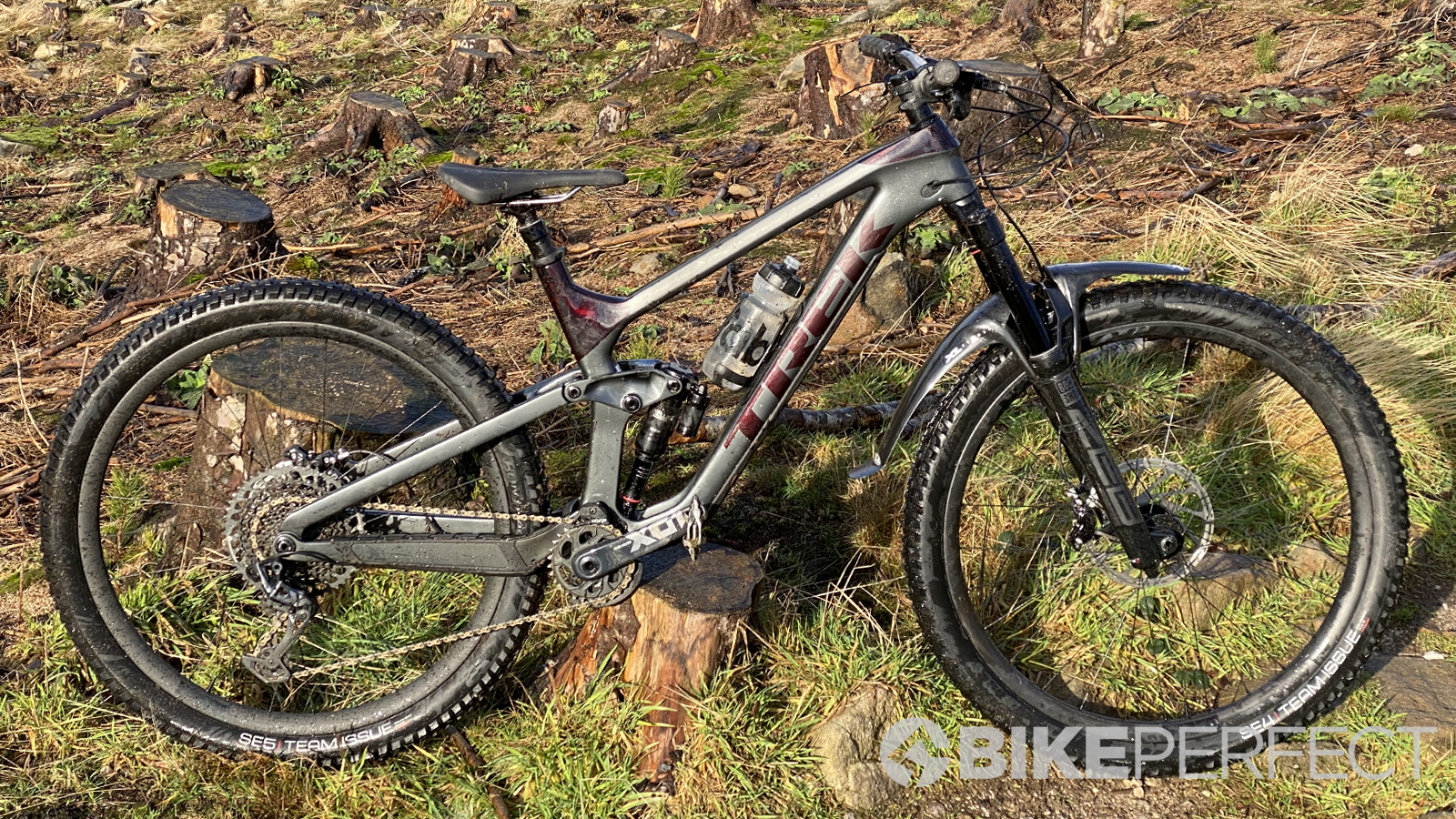
The only downside to the impressive back end, is that the multi-adjustable and normally awesome feeling ZEB Ultimate fork regularly felt shaded by the chassis control when the Slash was getting into its stride. Wonderfully feedback-rich brakes, high strength carbon rims (that survived plenty of rim hits when we got a temporary slow flat, sturdy tires (which stayed on when we had that flat), plenty of seat post drop (on the L and XL at least) and the extra peace of mind from the frame armor, chainring protector and chain retainer mean no worries about the rest of the spec either.
While attacking the most aggressive lines and straight-lining the most brutal terrain at race velocities is where the Trek is designed to fully flex its performance, it won’t sulk too badly if you’re not an Enduro World Series-caliber pilot on an appropriately terrifying track. What the Bontrager SE4 tire lacks in glory grip, it gains in easy and efficient rolling and when we switched the rubber round the Slash can properly hustle. The super fast pick up of the rear hub and the permanently poised suspension help offset the chunky weight of the Line Elite wheels too. Add the efficiency amplifying stiffness of the frame and our testers were consistently surprised how well the Slash pedaled even on prolonged climbs or road/fire road transition sections and we rarely used the ‘locked’ position on the shock. Excellent rear wheel traction and communication means you’ll rarely dab a foot on the way back up even the most technical trails either, although we did nudge the saddle forward on the rails to balance the throwback of the post in the steeply sloped upper seat tube. Inevitably the big wheels, super stable handling and 14.6kg weight mean it can become a wrestling match compared to a lighter, shorter and/or 27.5in wheeled bike if you let speed drop too low or lose focus and swap the racing line for a swamp.
Verdict
Most bikes in the Enduro category claim to be race machines but few - if any - communicate their extreme course-crushing performance with as much clarity and authority as Trek’s new Slash. Evolved, stability-boosting geometry, superbly sorted suspension baseline with dialed on-the-fly fine tweaking and excellent pedaling response, make it one of the most speed-hungry, high-velocity bikes we’ve ever ridden. It’s tough and seismically assured enough to hit up the bike park but loaded with the practical details and pedaling efficiency to make it a big day happy, no limits trail bike too. As sturdy as they are, sub £800 ‘budget’ carbon wheels don’t sit right on an over 8K bike, it definitely deserves a grippier front tire and even the mighty ZEB fork can feel shaded by the unique Thru Shaft back end and carbon chassis.
Test conditions
- Temperature: 0-7 degrees, rain, sleet, ice, occasional weak, watery sun
- Surface: Wet, muddy, rooty, rocky, natural and bike park
- Routes: Natural wild trails, old school DH and red and black, rocky bike park
Tech Specs: Trek Slash 9.9 X01
- Price: $8,499.99 / £8,250.00
- Head angle: 64 degrees
- Frame material: OCLV Mountain Carbon
- Sizes: S-XL (L tested)
- Weight: 14.6kg
- Wheel size: 29-inch
- Suspension: RockShox ZEB Ultimate 170 mm travel, RockShox Super Deluxe Ultimate 160 mm travel
- Components: SRAM X01 Eagle 10-50T 12-speed gearing, shifter and 30T chainset, GX Eagle chain. MRP Chain guide and guard SRAM Code RSC brakes with 200mm front and 180mm rear rotors. Bontrager SE4 Team Issue 29 x 2.4in front and Bontrager SE5 Team Issue 29 x 2.6in rear tires on Bontrager Line Elite 30, OCLV Mountain Carbon wheels. Bontrager Line Pro, OCLV Carbon 820mm carbon bar and Bontrager Line Pro, Knock Block 35mm stem, Bontrager Line Elite Dropper 170 mm travel dropper post, Bontrager Arvada Austenite railed saddle.

Guy Kesteven has been working on Bike Perfect since its launch in 2019. He started writing and testing for bike mags in 1996. Since then he’s written several million words about several thousand test bikes and a ridiculous amount of riding gear. He’s also penned a handful of bike-related books and he reviews MTBs over on YouTube.
Current rides: Cervelo ZFS-5, Specialized Chisel, custom Nicolai enduro tandem, Landescape/Swallow custom gravel tandem
Height: 180cm
Weight: 69kg
